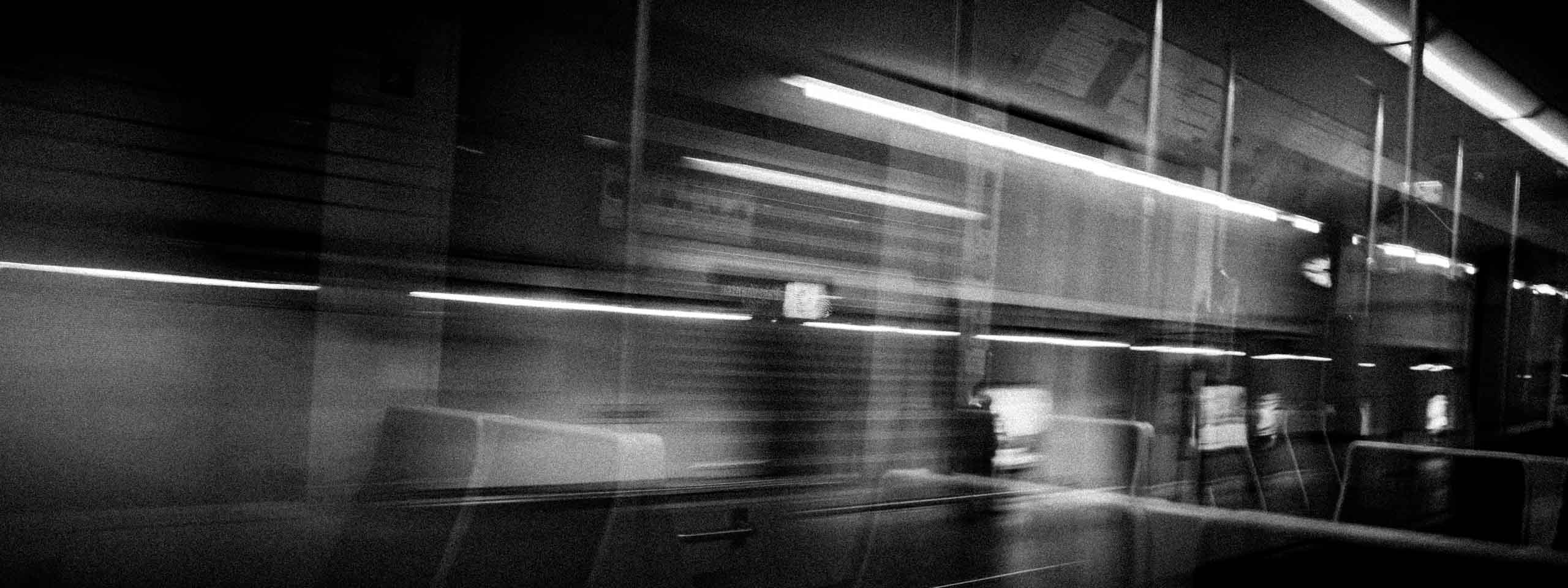09/22/2020
Yesterday I was again at the place where I found the beautiful parasol mushroom (Macrolepiota procera) last weekend. You never know exactly where beautiful mushrooms grow and even if you know a good spot, you cannot be sure that in later years there will be mushrooms there again. These small creatures, which are biologically neither animals nor plants, are extremely mysterious. But if the conditions are good in one place in a year's time, you have a good chance of finding more beautiful specimens there. This was also the case here, on a heather-covered slope of the Teutoburg Forest. I set off very early in the morning to be there before sunrise. So early the light is still very soft. I took pictures with the Fujifilm GFX 50R camera and the Fujinon GF 4/ 120 mm R LM OIS WR macro lens. Of course I also used a tripod.
Prints of the pictures are available in my online shop. If you want to visit the shop, you have to leave this website: www.farbenfrohebilder.de
Parasol mushroom in the first morning light #1

Parasol mushroom in the first morning light #2
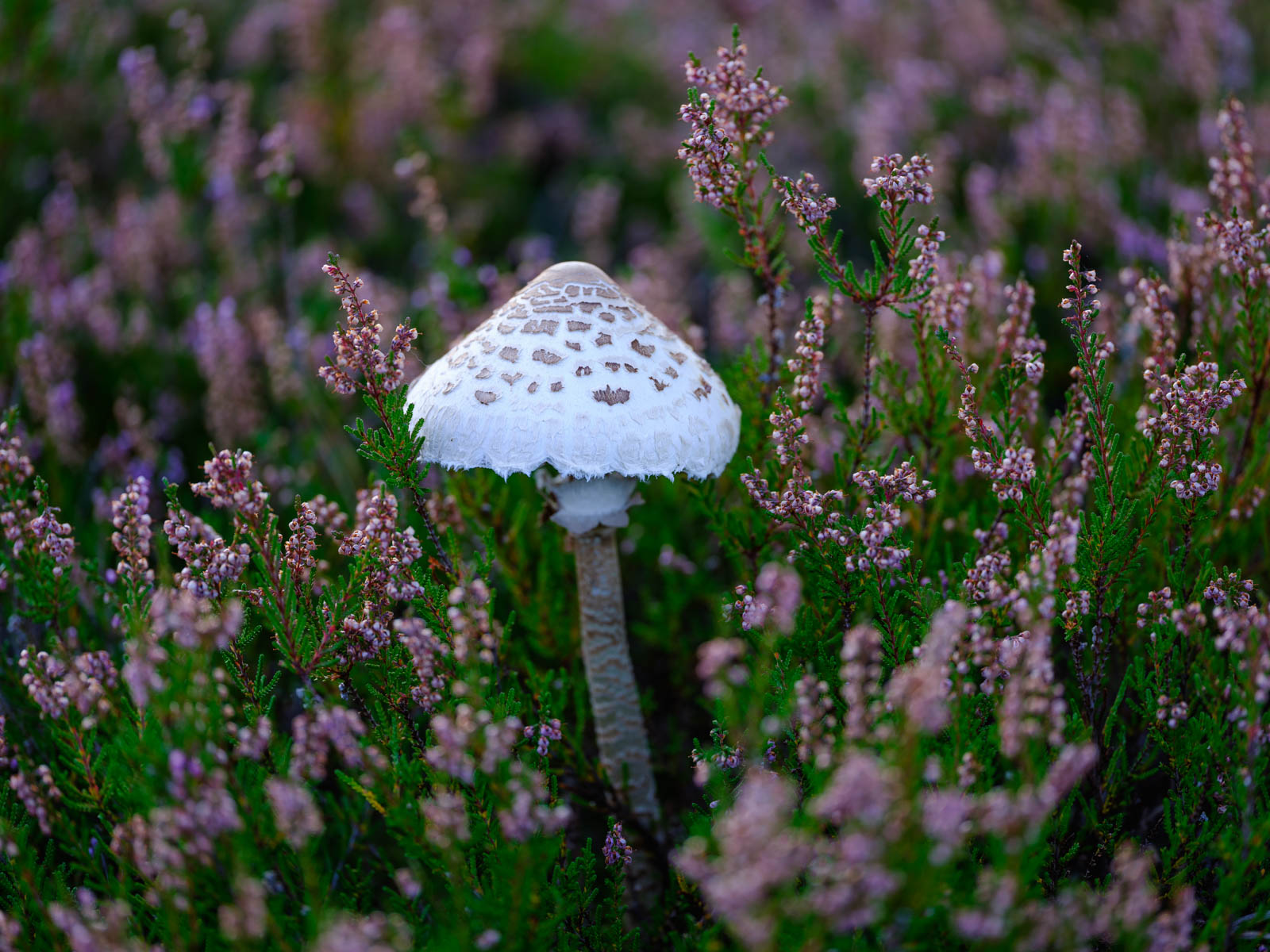
Parasol mushroom in the first morning light #3
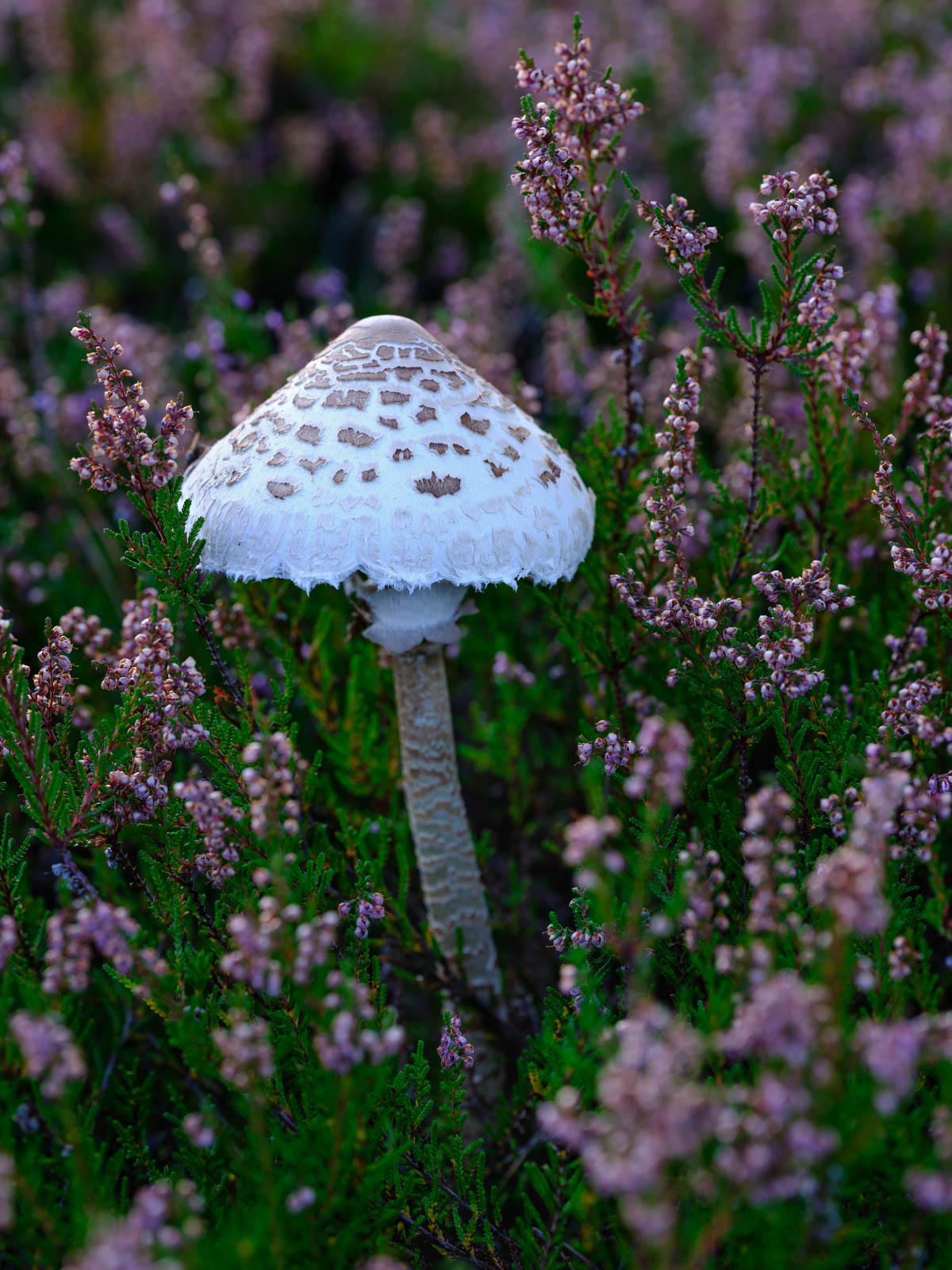
> Nature
09/20/2020
Now, in mid-September, summer is slowly coming to an end and autumn is just around the corner. And with it the time of the mushrooms begins again. Although it is still relatively warm and dry, you can already find them. In a pine forest at the southern edge of the Teutoburg Forest I found a place with beautiful parasol mushrooms. One of the specimens growing there I have dedicated myself extensively with the camera.
Parasol mushroom (Macrolepiota procera) #1
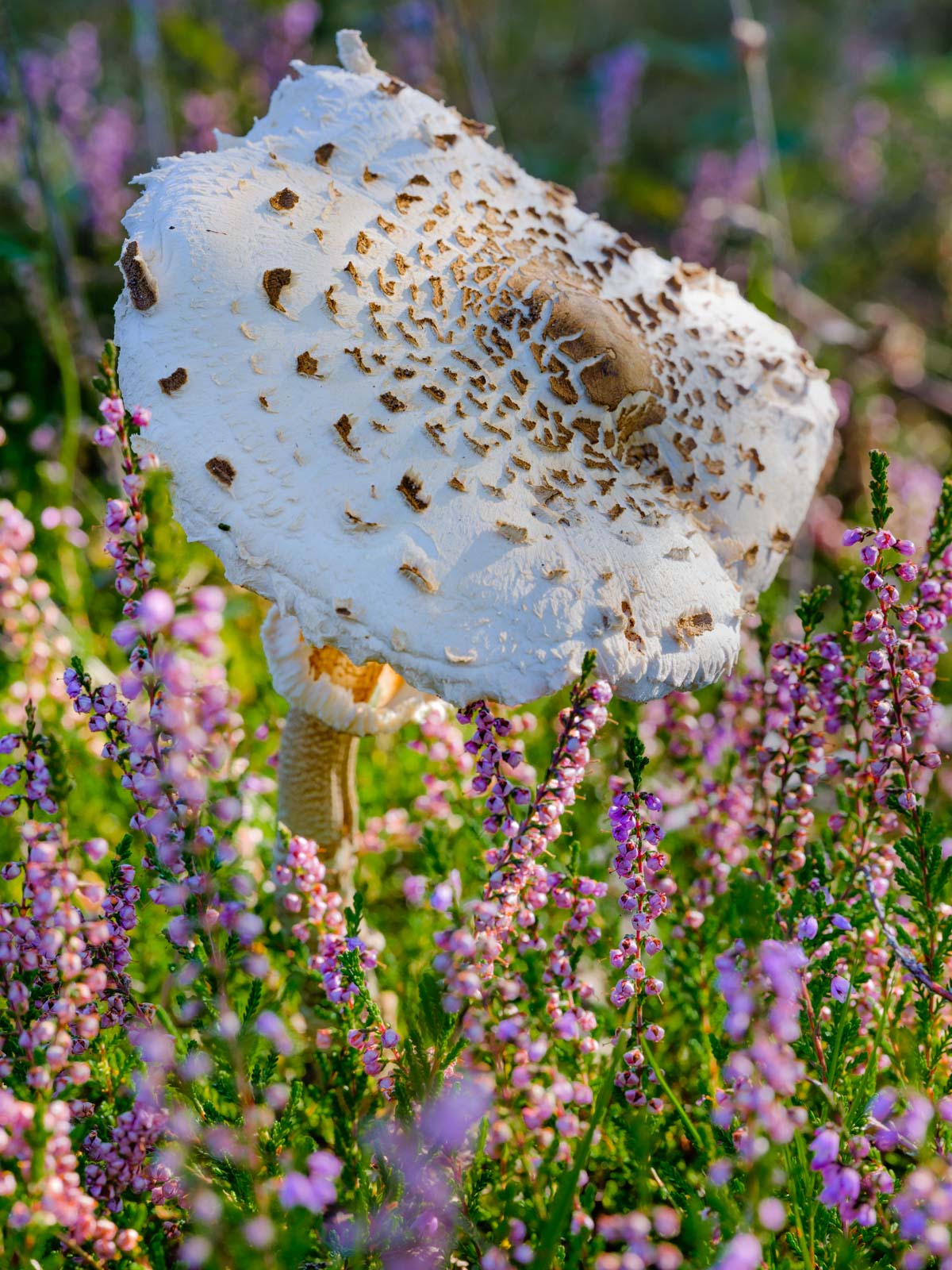
Parasol mushroom (Macrolepiota procera) #2

Parasol mushroom (Macrolepiota procera) #3
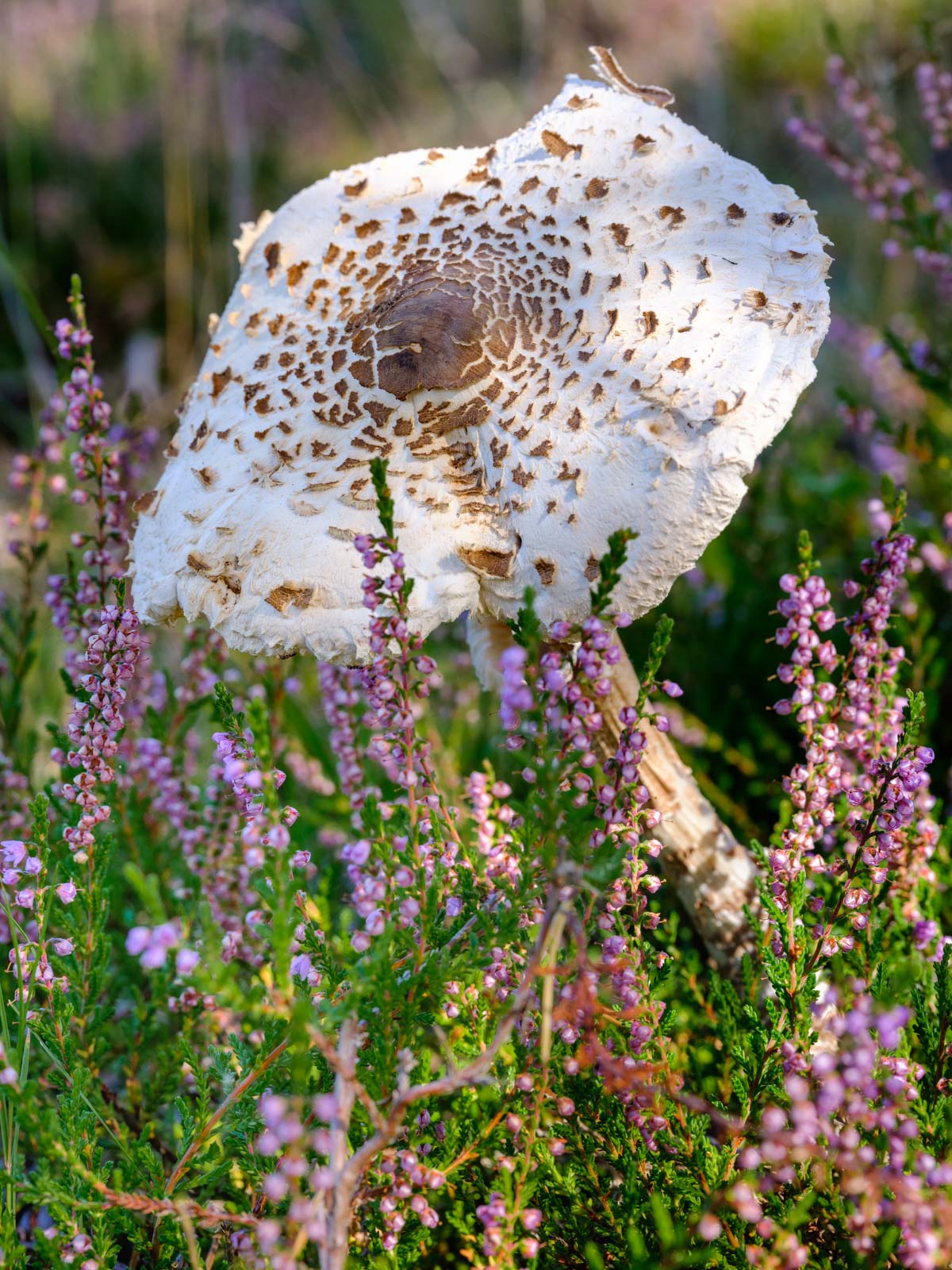
Parasol mushroom (Macrolepiota procera) #4
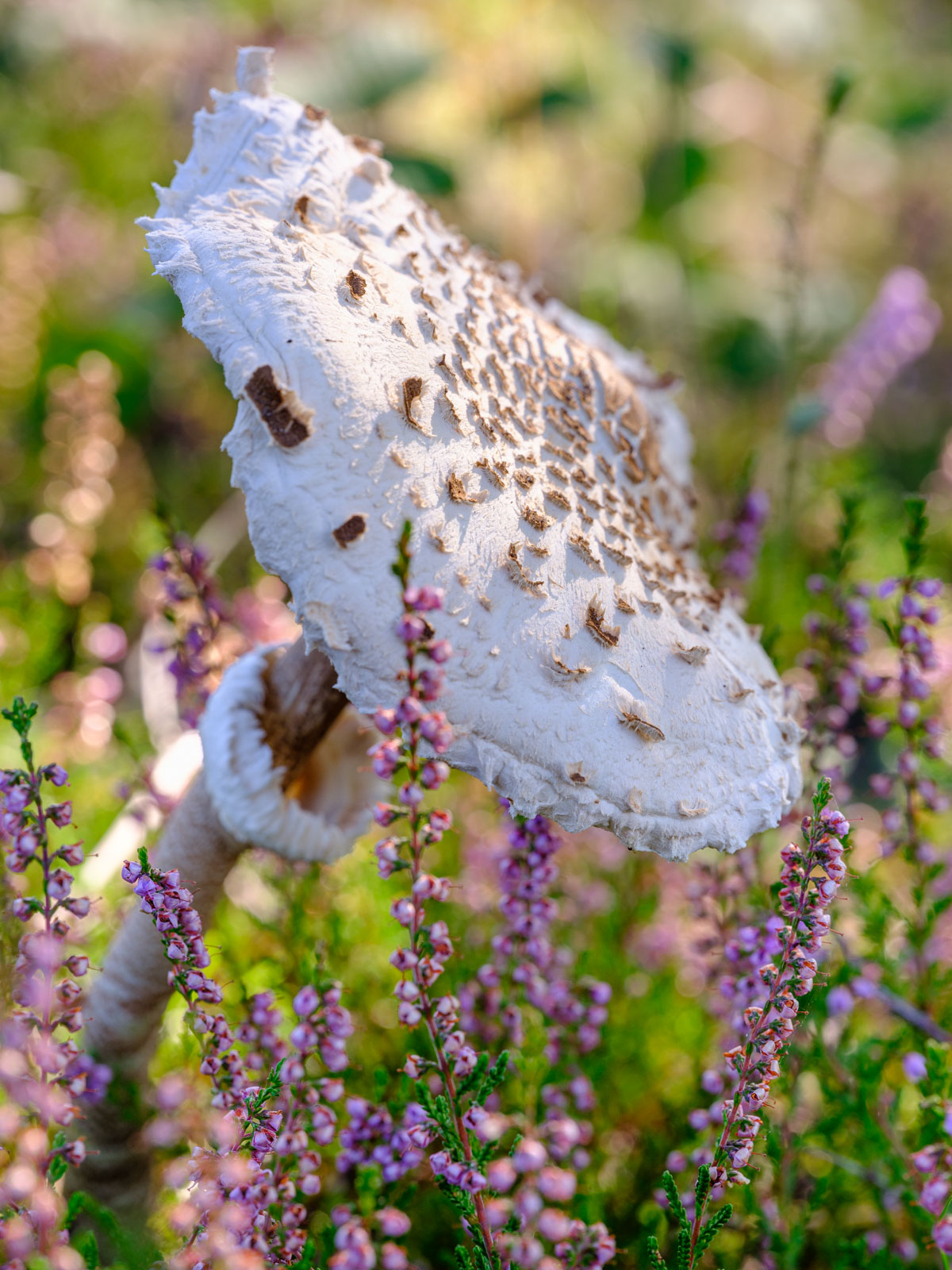
> Nature
09/13/2020
Occasionally plants have strange names. Like this sneezeweed. The scientific name is Helenium. The eponym here was Helen of Troy from Greek mythology. At least that is what it says in the literature. This is also a bit strange, because the plant in its wild form comes from the American continent. However, the cultivated form on the two photos below is named after the female German first name 'Waltraut'. Today this name is not very common anymore, but it was quite popular in the generation of my parents and grandparents. How this sneezeweed came to this name, I do not know. Now, of course, I have done some research to find out what 'Waltraut' means. In modern German, the origin of the name is no longer clear. The answer is that the first name is very old and comes from an early form of the German language. The Old High German, which was spoken in the period before the 10th century. 'Waltraut' therefore means something like that: The strong one on the battlefield. I was lucky then. The flower has been extremely peaceful towards me. The German name of the plant genus is 'Sonnenbraut', which literally means sun bride. I photographed 'Waltraut' on a very sunny Saturday morning in the Botanical Garden in my home town Bielefeld.
Prints of the pictures are available in my online shop. If you want to visit the shop, you have to leave this website: www.farbenfrohebilder.de
Sneezeweed (Helenium 'Waltraut') #1
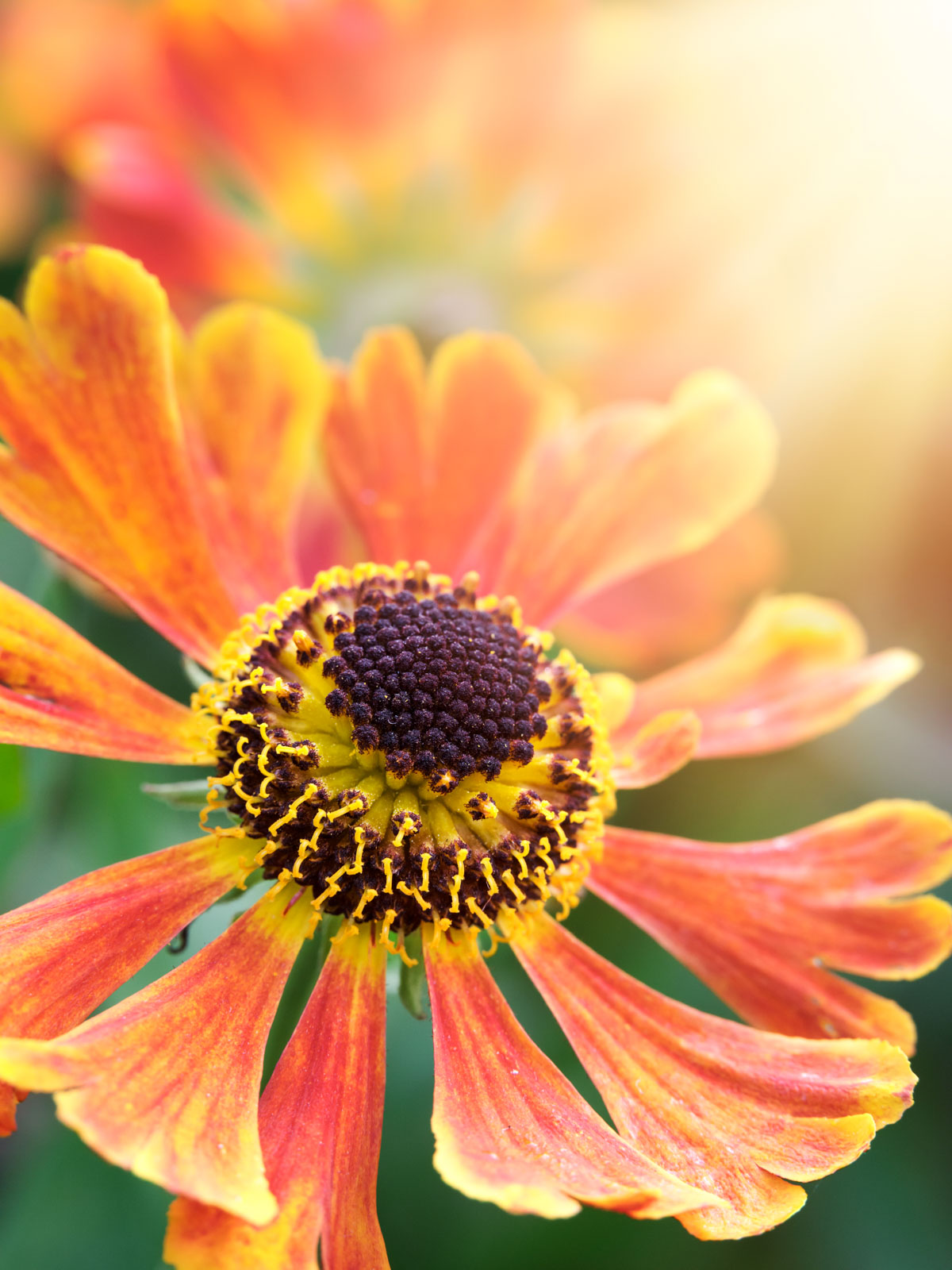
Sneezeweed (Helenium 'Waltraut') #2
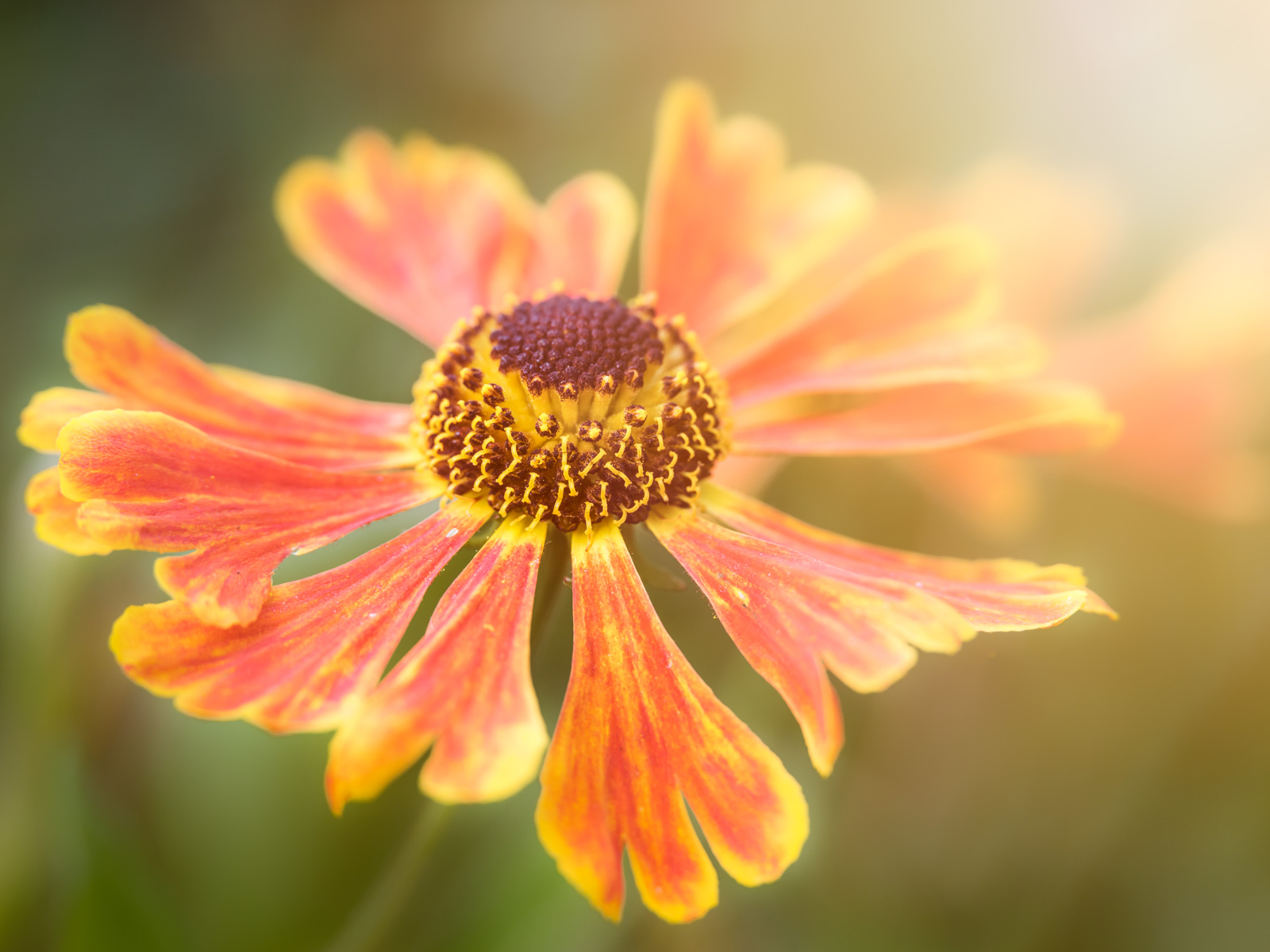
> Nature
09/11/2020
On a small meadow at the 'Johannisfriedhof' - a cemetery in my hometown Bielefeld - I came across a yellow coneflower a few days ago. The plant itself was anything but impressive, but against the green background of the meadow and with the shallow depth of field it was a nice photo opportunity. It was early in the morning and the cemetery was still in the shade. But it was already bright enough for a photo and the soft light brought out the colours nicely.
The photo was taken with the Fujifilm GFX 50R camera and the Fujinon GF 4/ 120 mm R LM OIS WR Macro lens. I used a tripod and a remote release cable. Without a tripod it is hard to take a good quality photo of such a macro subject. The blossom never really stood still. There was almost no wind, but it took a few tries until I could take a picture in good technical quality. You always have to have a little patience.
Prints of the pictures are available in my online shop. If you want to visit the shop, you have to leave this website: www.farbenfrohebilder.de
Yellow coneflower (Rudbeckia)
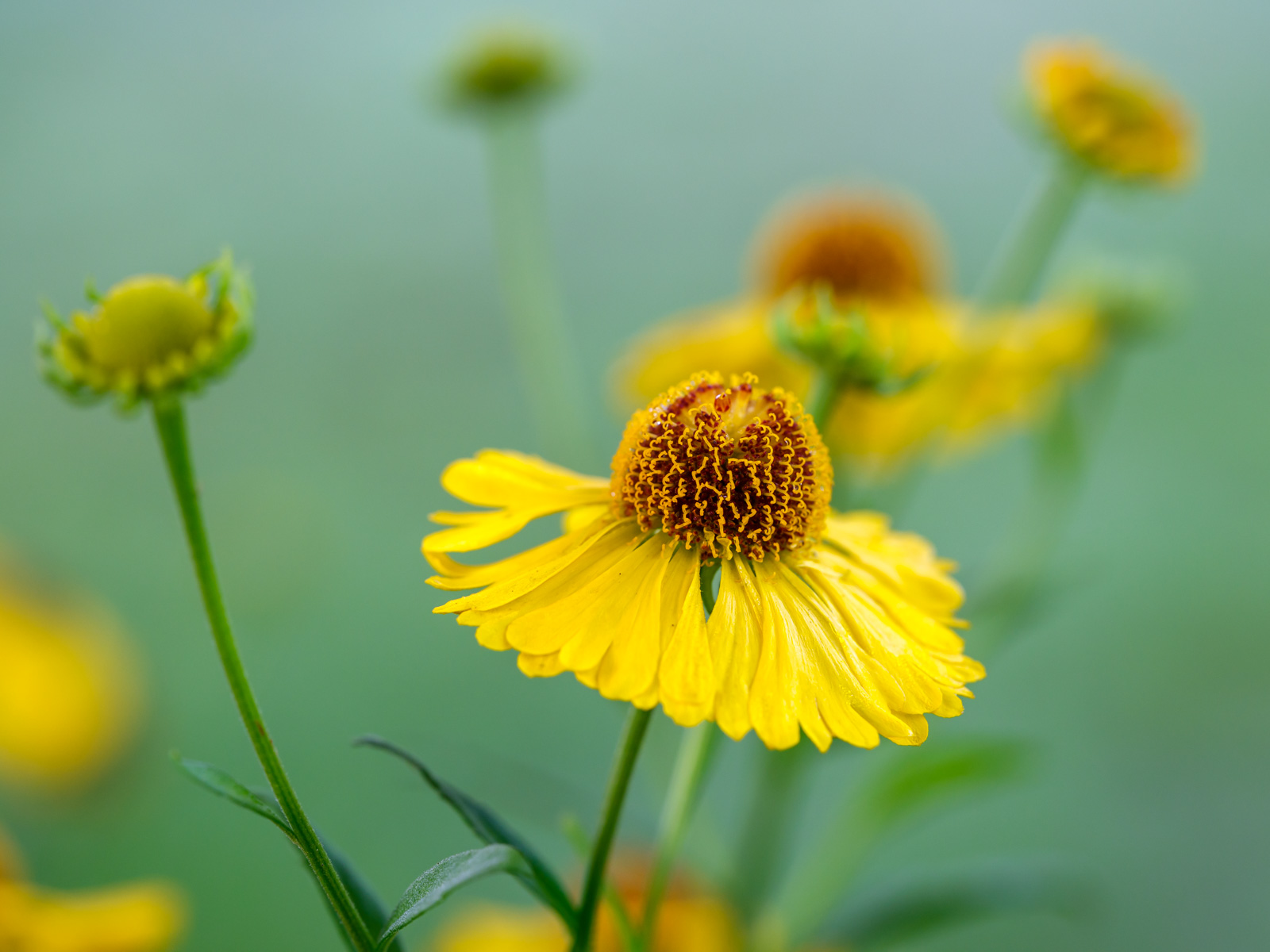
> Nature
09/10/2020
The history of the Botanical Garden in Bielefeld dates back to the early 20th century. Originally, the grounds were intended as an extension of a nearby cemetery. However, at that time, it was probably quickly realized that the site on the southern slope of the Teutoburg Forest was very well suited for a park. The location at the edge of the forest is characterized by favorable soil conditions and many hours of sunshine. For several months now, work has been underway to expand the botanical garden and a new pond has also been created. The two pictures were taken on a Sunday morning in best late summer weather.
Prints of the pictures are available in my online shop. If you want to visit the shop, you have to leave this website: www.farbenfrohebilder.de
New pond at the Botanical Garden Bielefeld #1

New pond at the Botanical Garden Bielefeld #2
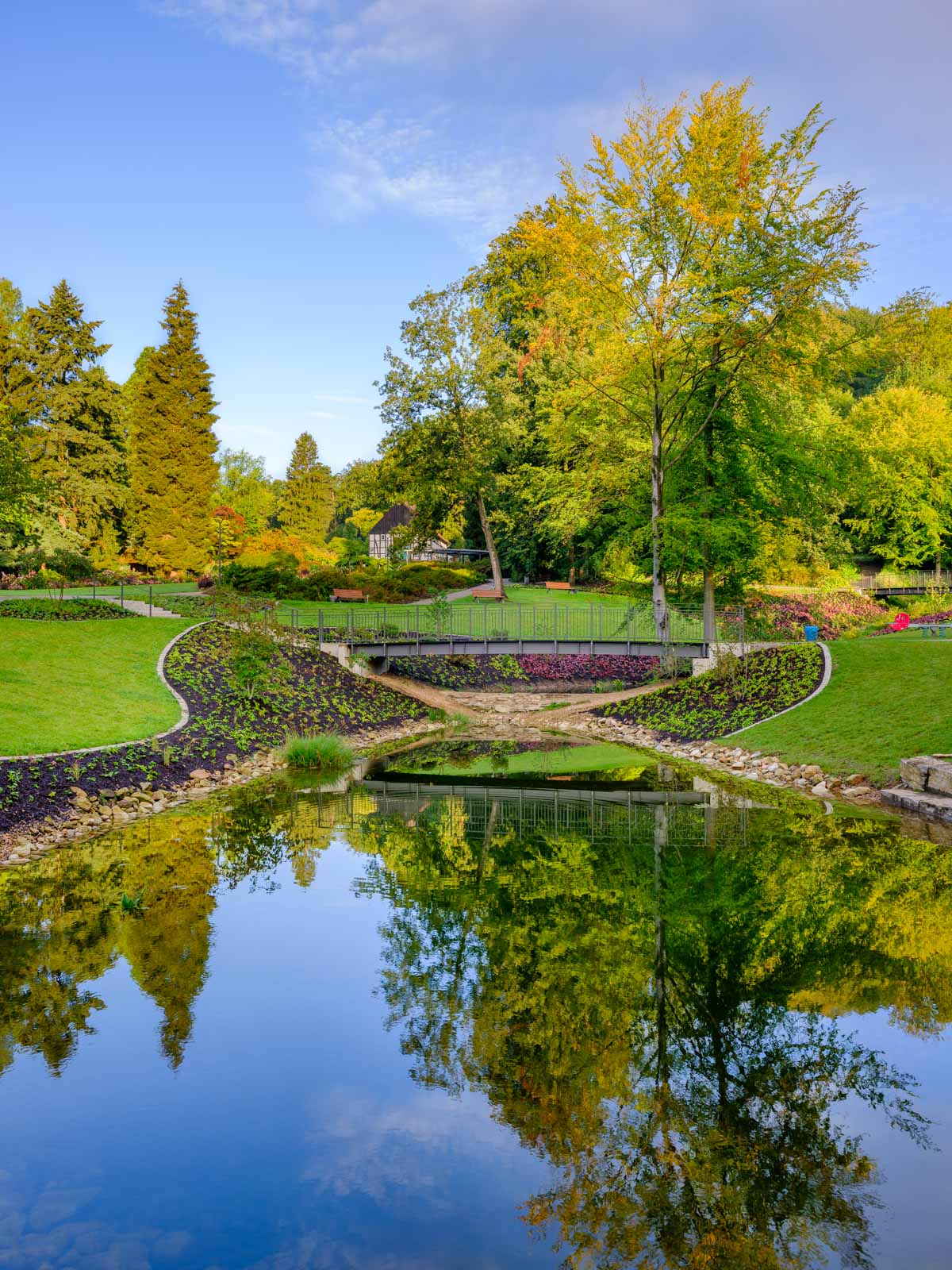
> Nature
09/03/2020
The 'Bockschatzteich' is located in the Bielefeld district of Brackwede directly on the Cologne-Hanover railroad line. This is a small reservoir, which probably many people in Bielefeld do not know. It lies in a small forest area. I was there a few days ago. When I set out on my way late in the afternoon, the sky was just about closing in and it even rained a little. But in the course of the evening the sky loosened up again and at sunset there was a really nice light atmosphere.
Cloudy sky with a rainbow

Sunset at the Bockschatzteich #1
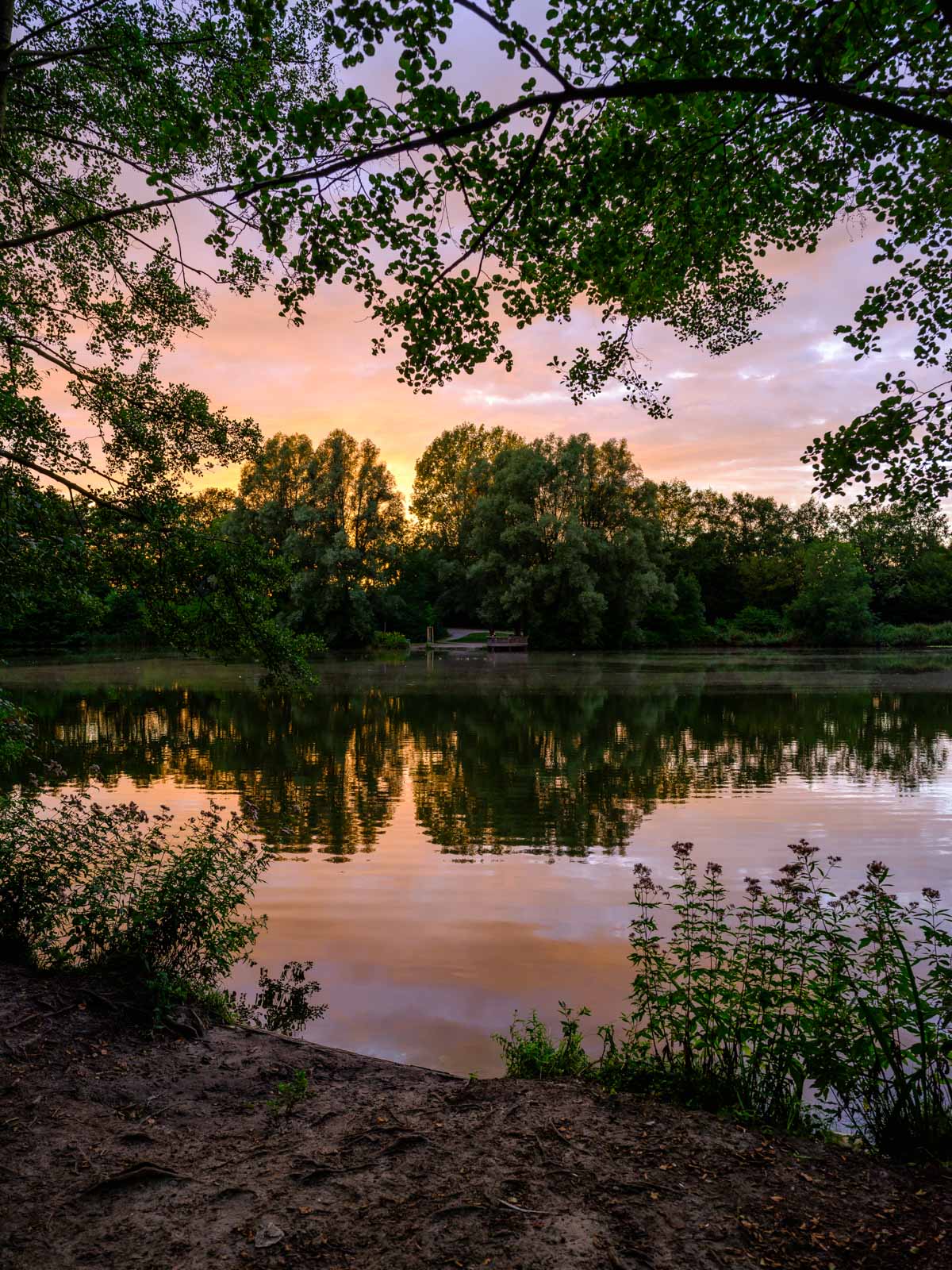
Sunset at the Bockschatzteich #2
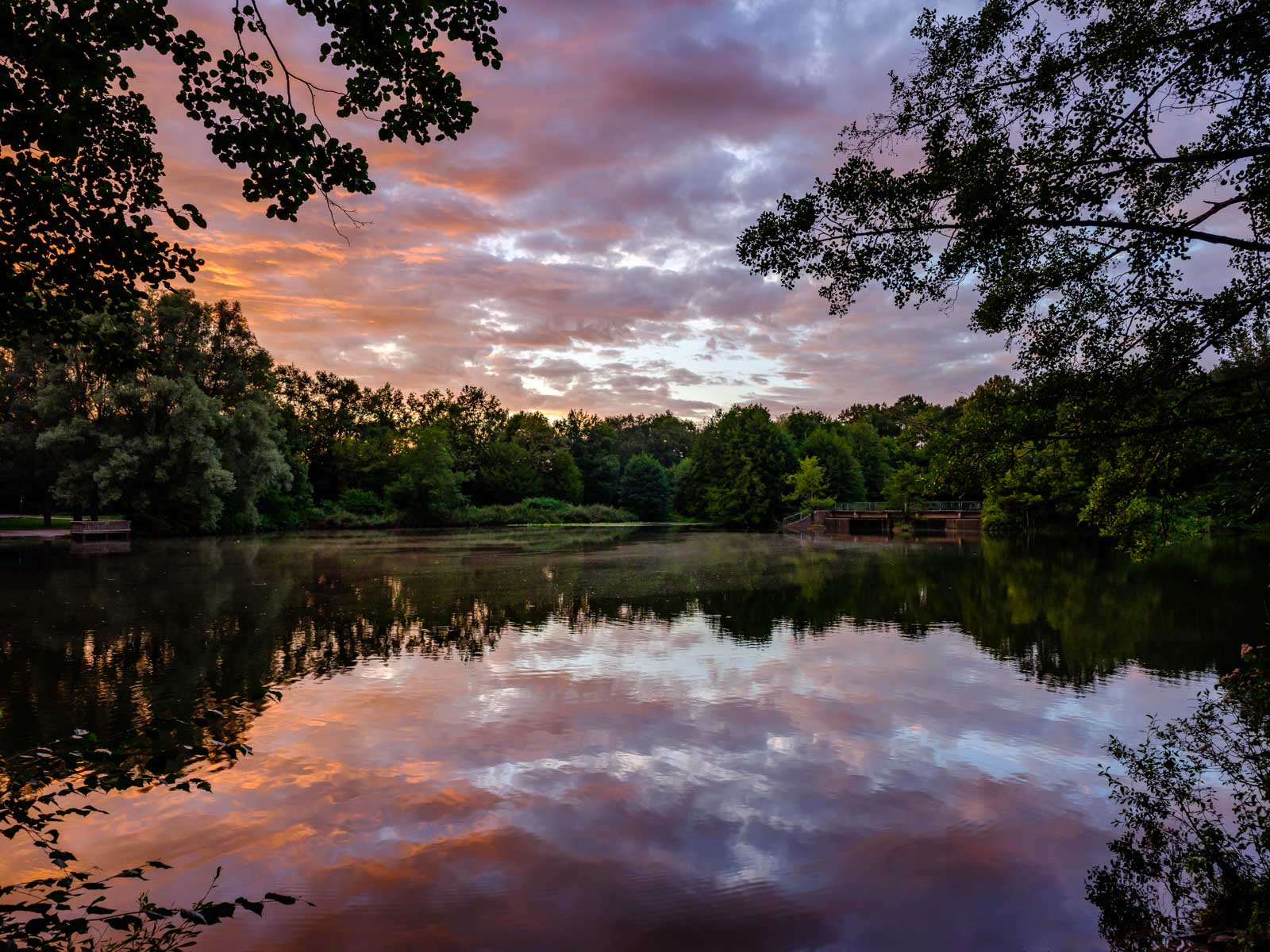
> Nature
08/22/2020
As is well known, flash is often very useful in photography. When you have less natural light than you need it, or to lighten shadows and reduce too much contrast. Most of the times, one wants to avoid that everybody can see that the flash was intended. But you can also use flash light in such a way that it is visible for everyone and use it as a creative element. I tried this yesterday and chose some sunflowers on a field.
I used a Fujifilm GFX50R camera with the Fujinon GF 3.5/ 50 mm R LM WR lens and two Nissin i60A flashes with the Air 10s control unit.
Prints of the pictures are available in my online shop. If you want to visit the shop, you have to leave this website: www.farbenfrohebilder.de
Sunflower flash fun #1
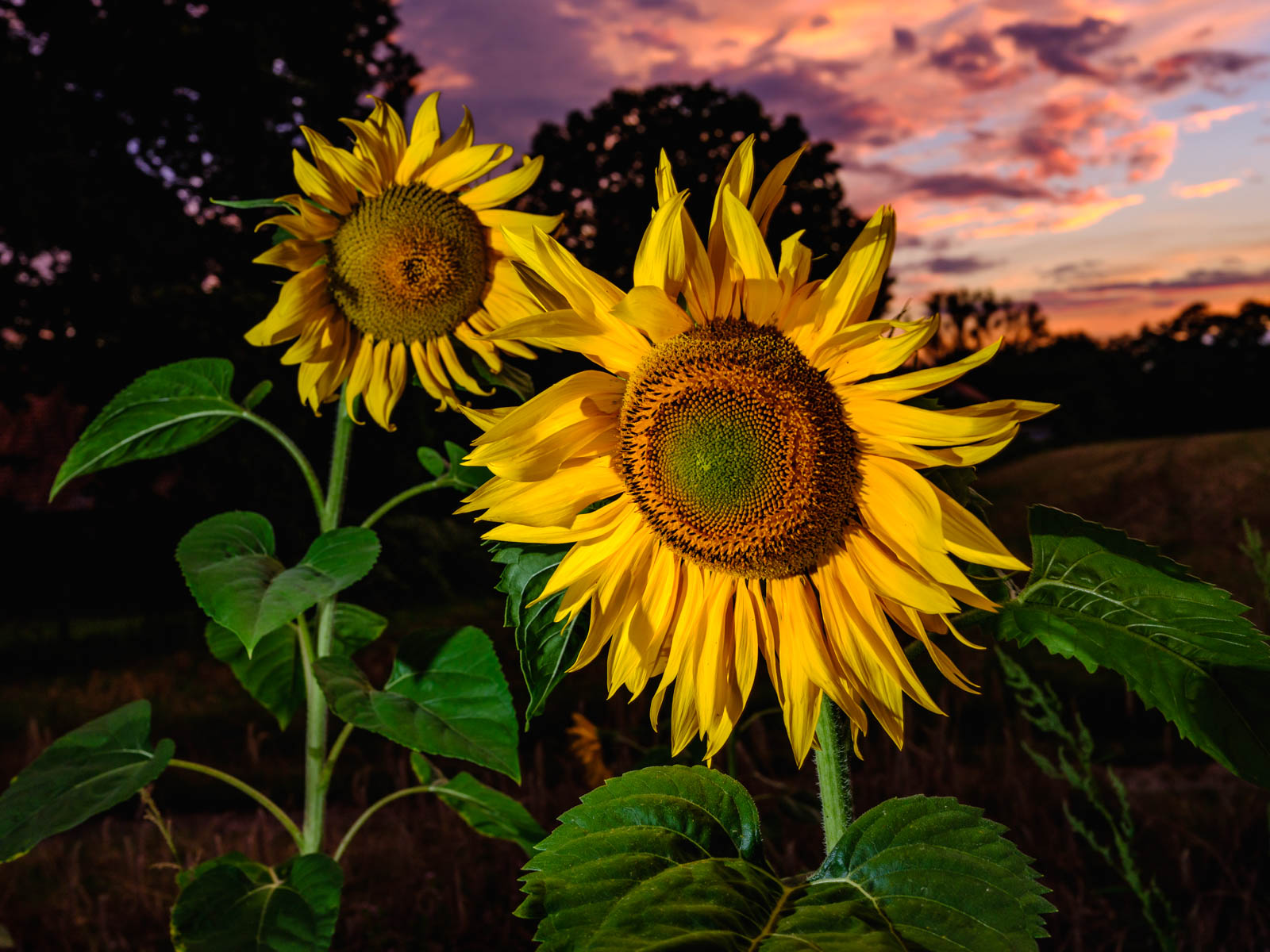
Sunflower flash fun #2
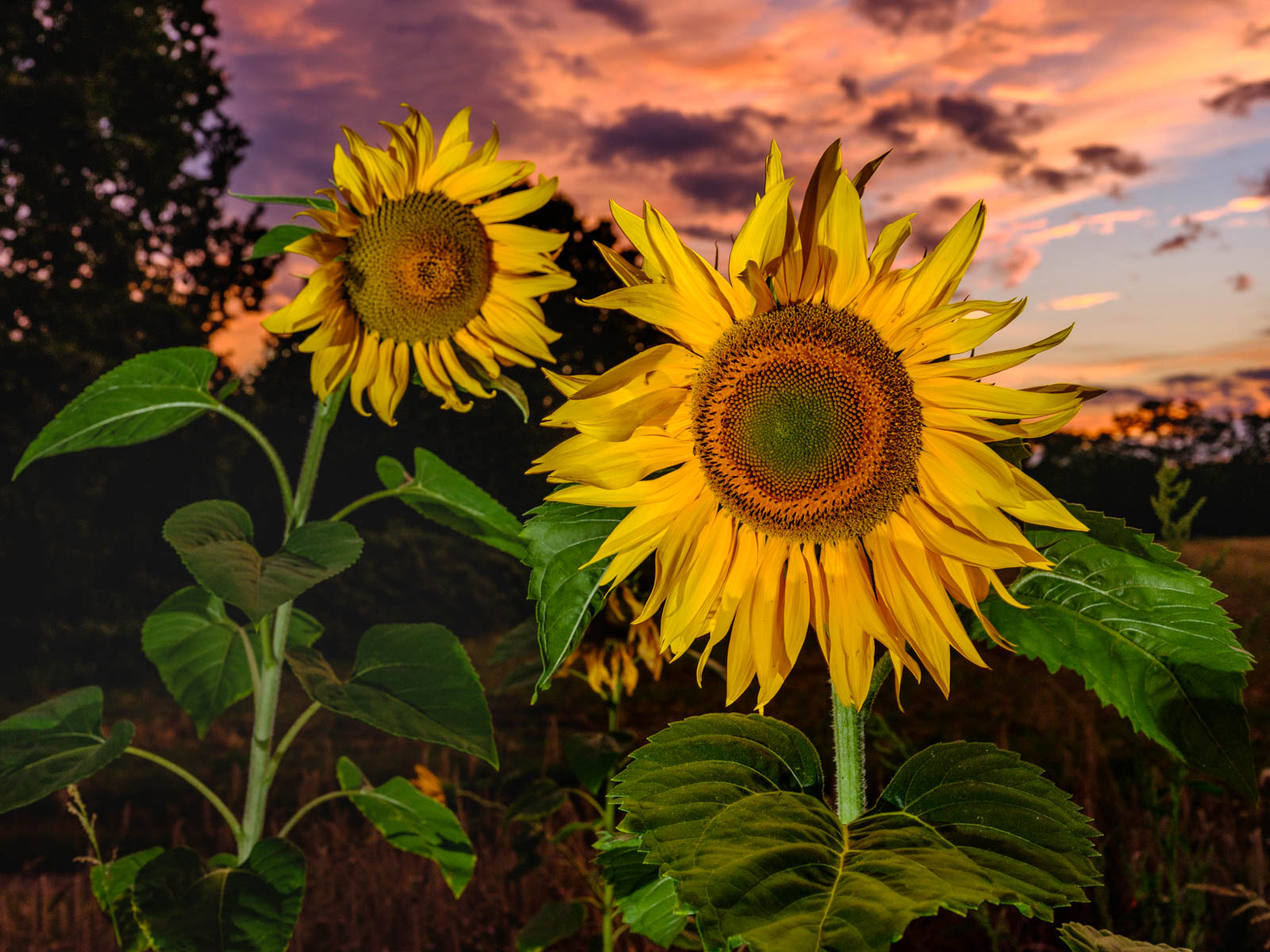
Sunflower flash fun #3
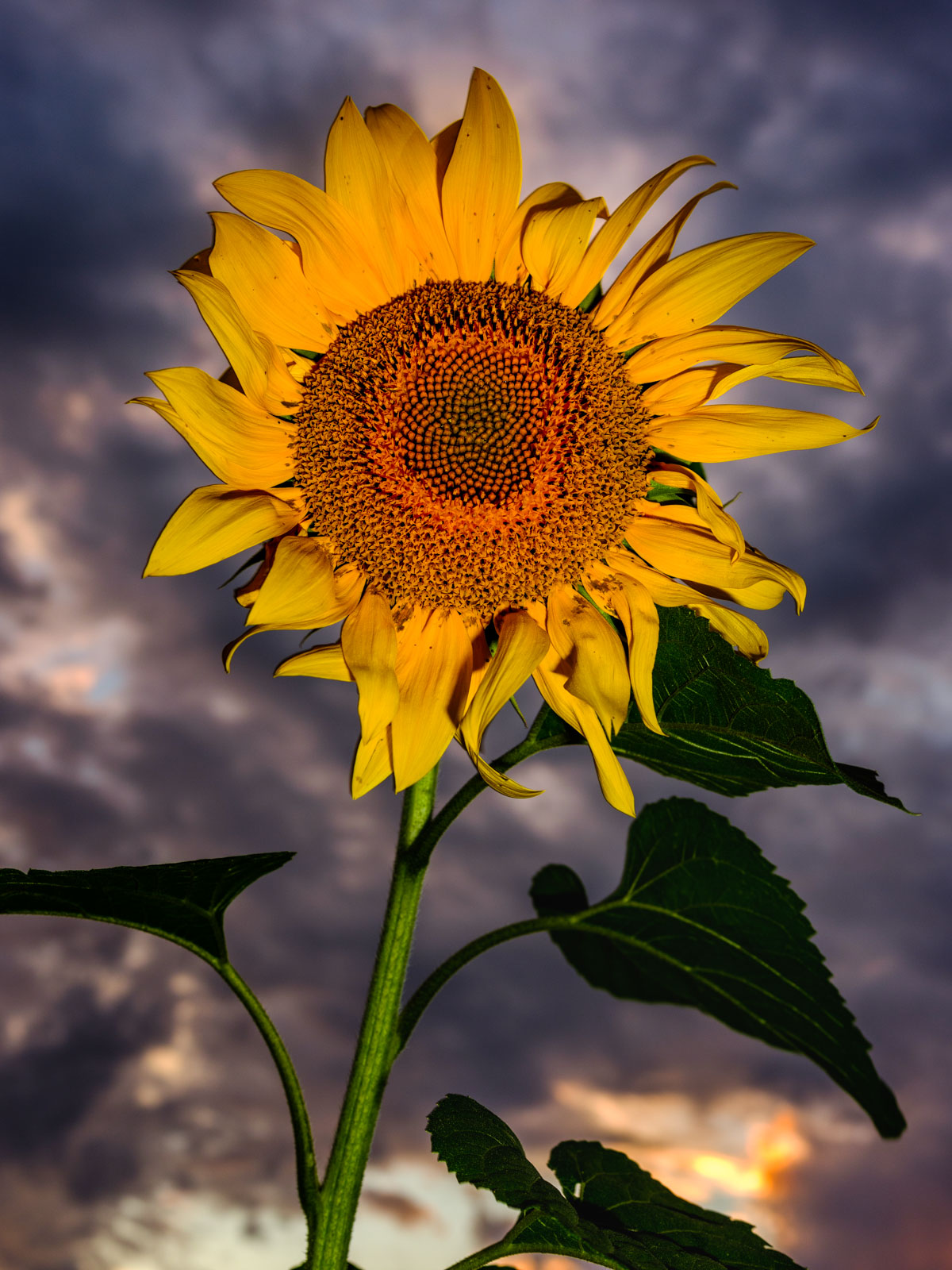
Sunflower flash fun #4

> Nature
08/18/2020
The 'Herforder Straße' is one of the main access roads in Bielefeld. The traffic volume is high and the development on the left and right is dominated by trade and industry and a few mostly not very nice residential buildings. More or less by chance I passed by there on a Saturday morning an took a picture of the 'Herforder Straße' at sunrise.
Sunrise at Herforder Straße
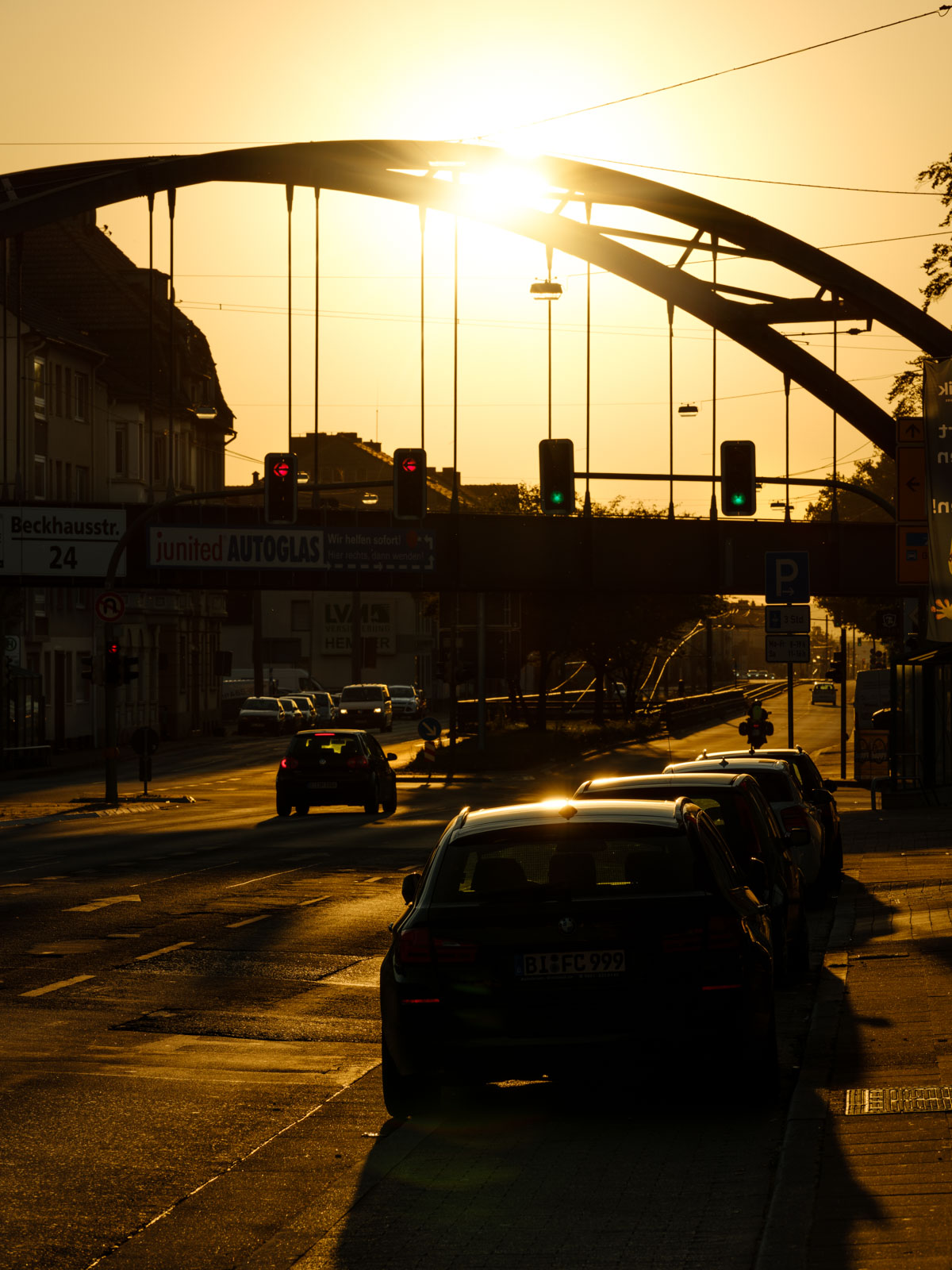
08/15/2020
After a longer break I brought out my drone again. A few days ago I took pictures of the two old gasometers in the Teutoburg Forest and now I've been on the 'Johannisberg' with my DJI Mavic 2 Pro. From there you have a nice view over the city centre of Bielefeld. A certain difficulty is to find a suitable place to fly. Since the train tracks and residential areas are nearby, it's not that easy. But there are some places from where you can legally take off.
Sunrise over the city centre #1
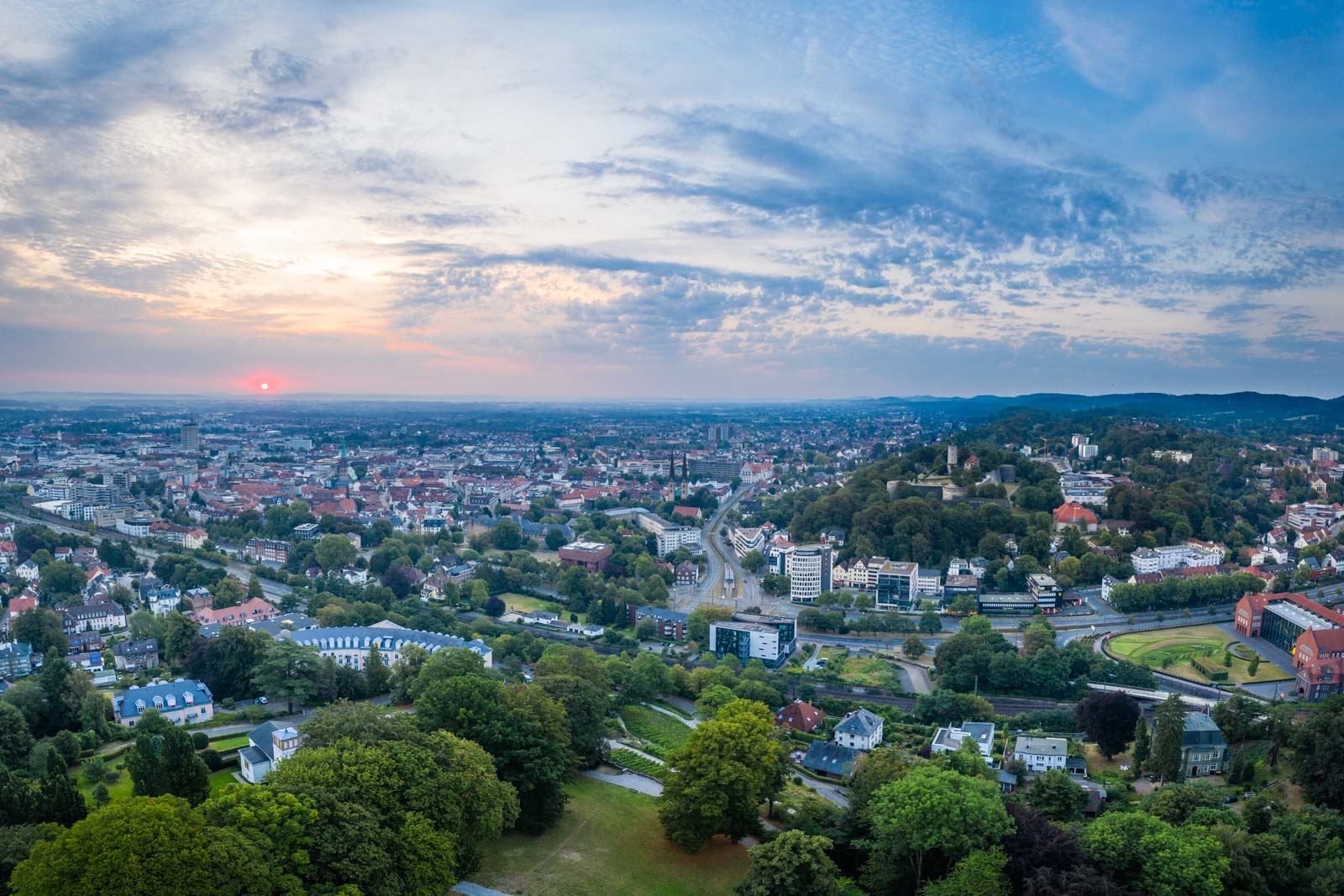
Sunrise over the city centre #2
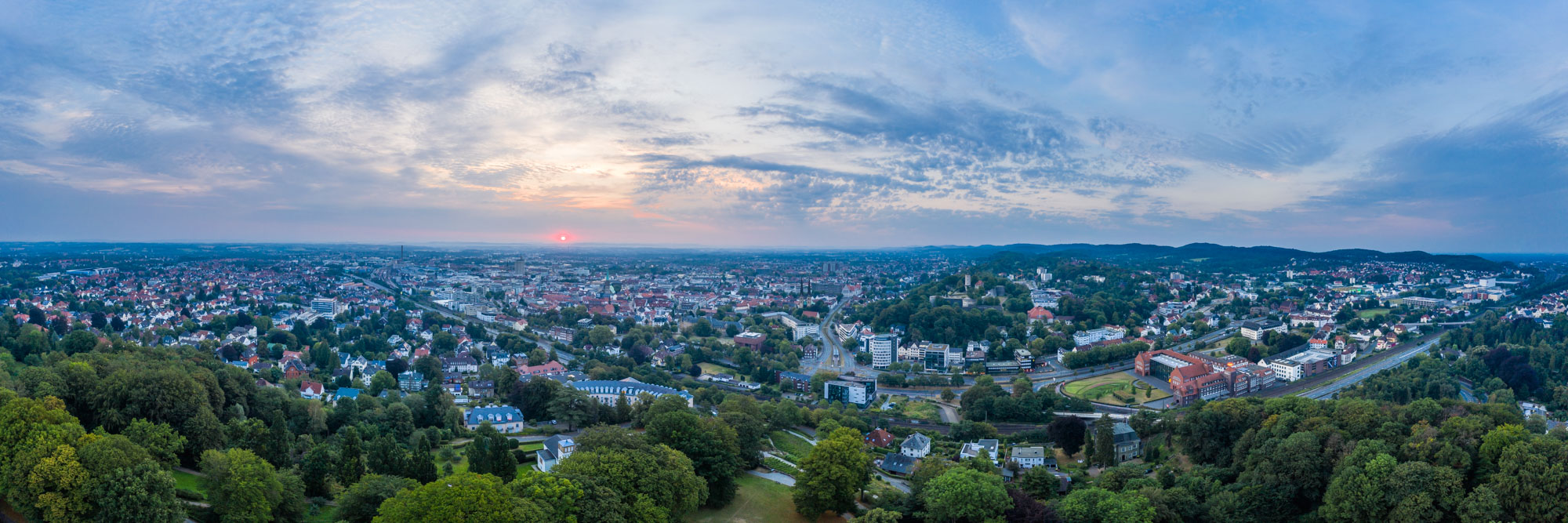
Above the farmhouse museum
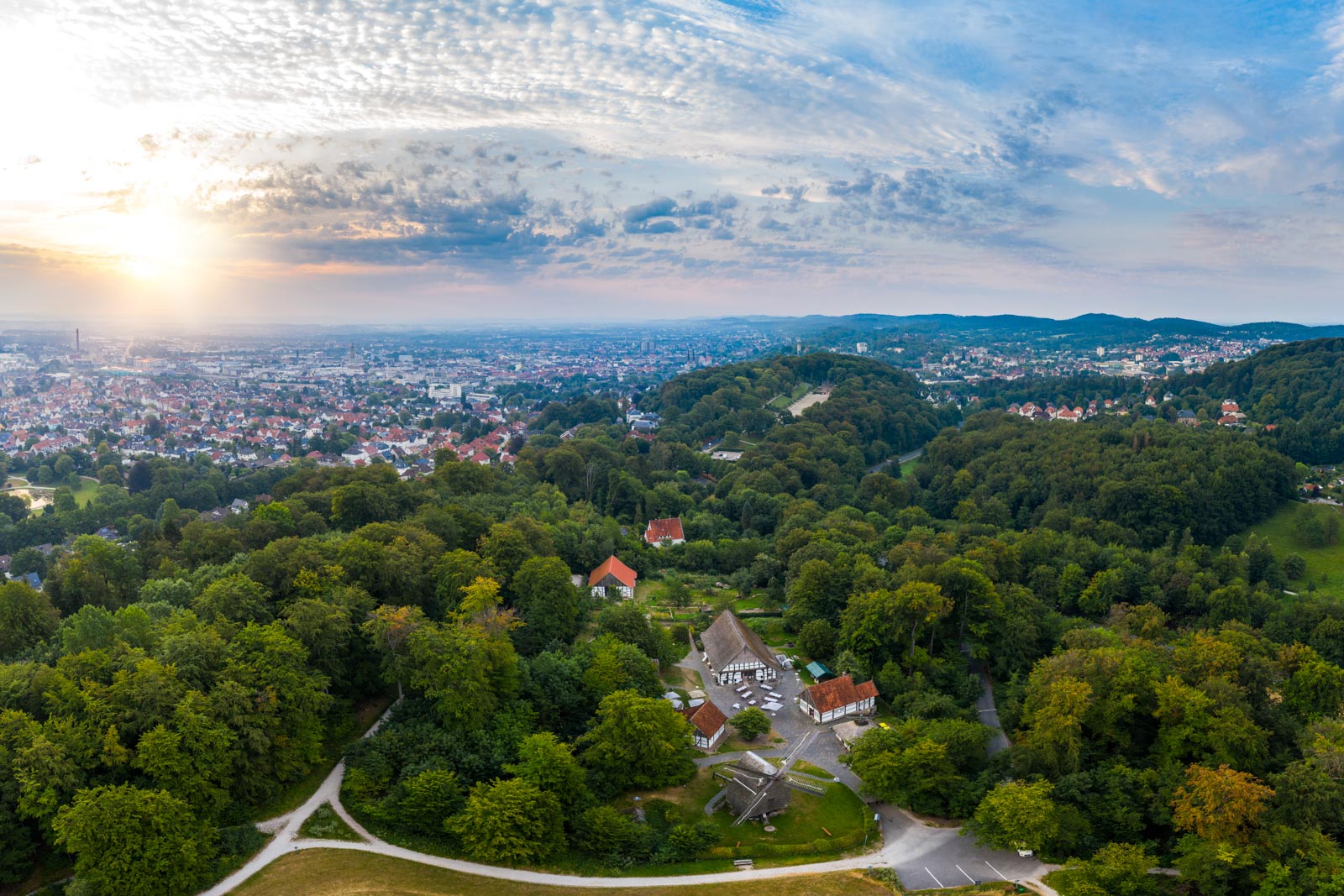
Sunrise over the city centre #3
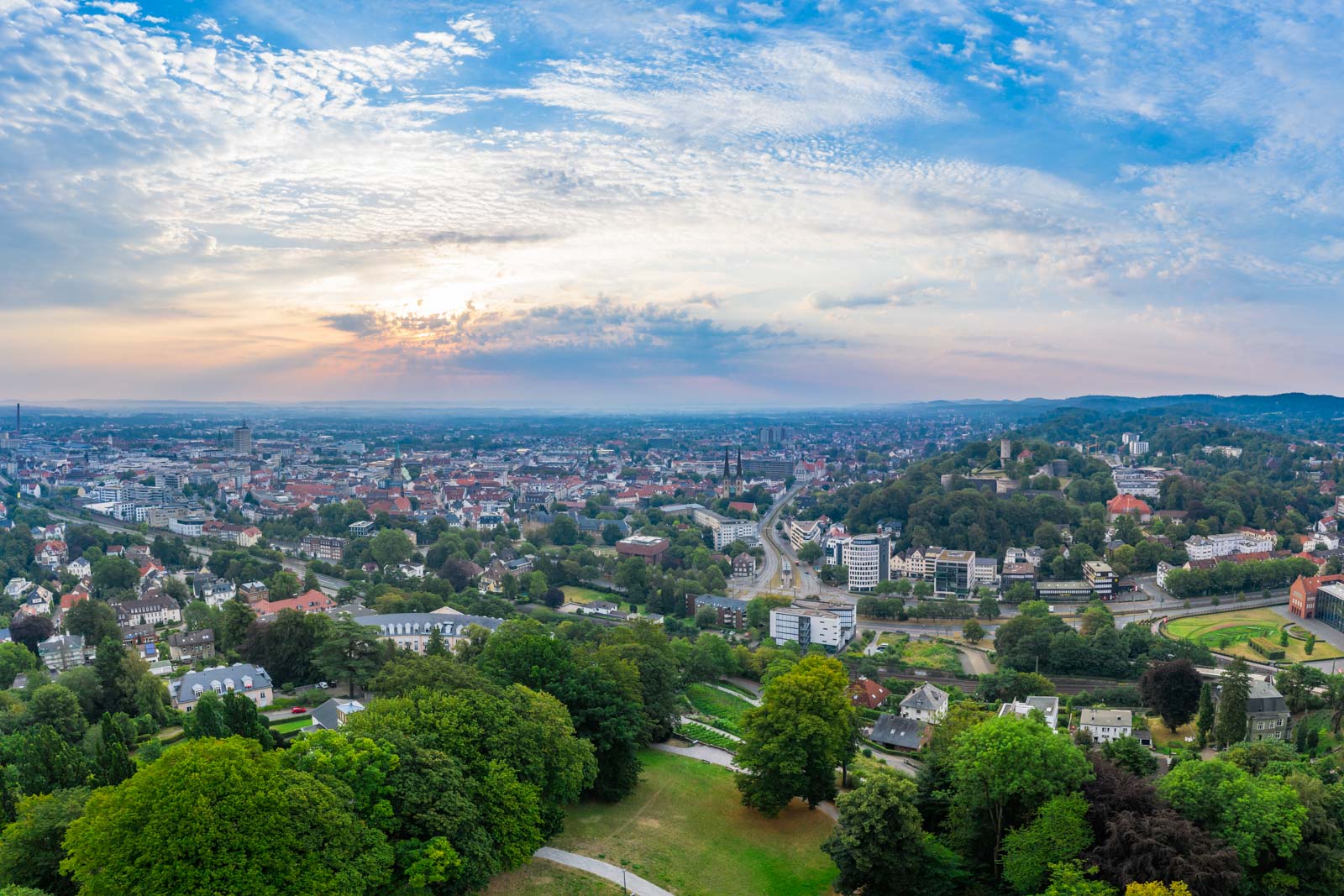
Sunrise over the city centre #4
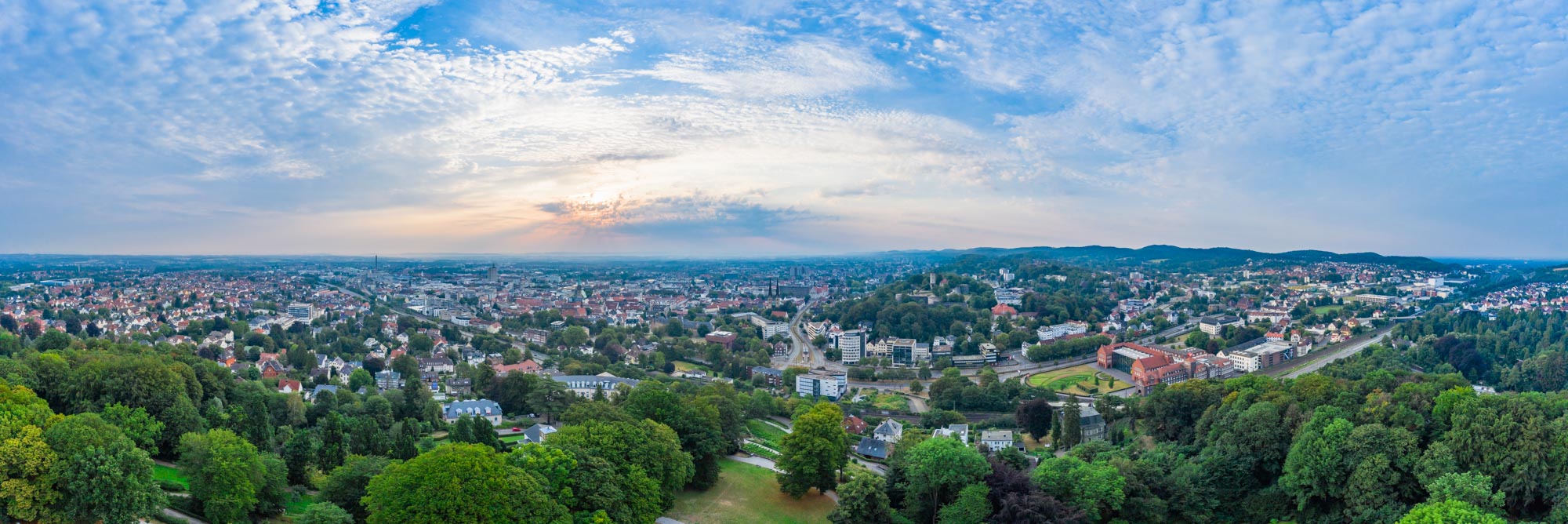
08/13/2020
At the edge of the Teutoburg Forest, in Bielefeld's Bethel district, there are two old gasometers. They have both been out of operation for a long time, but have not been dismantled. One could say that they have become small landmarks over time and that is probably why they have been left standing. I took pictures of the spherical gas containers early in the morning in August at sunrise. The photos were taken with the drone DJI Mavic 2 Pro.
Sunrise above two old gasometers #1
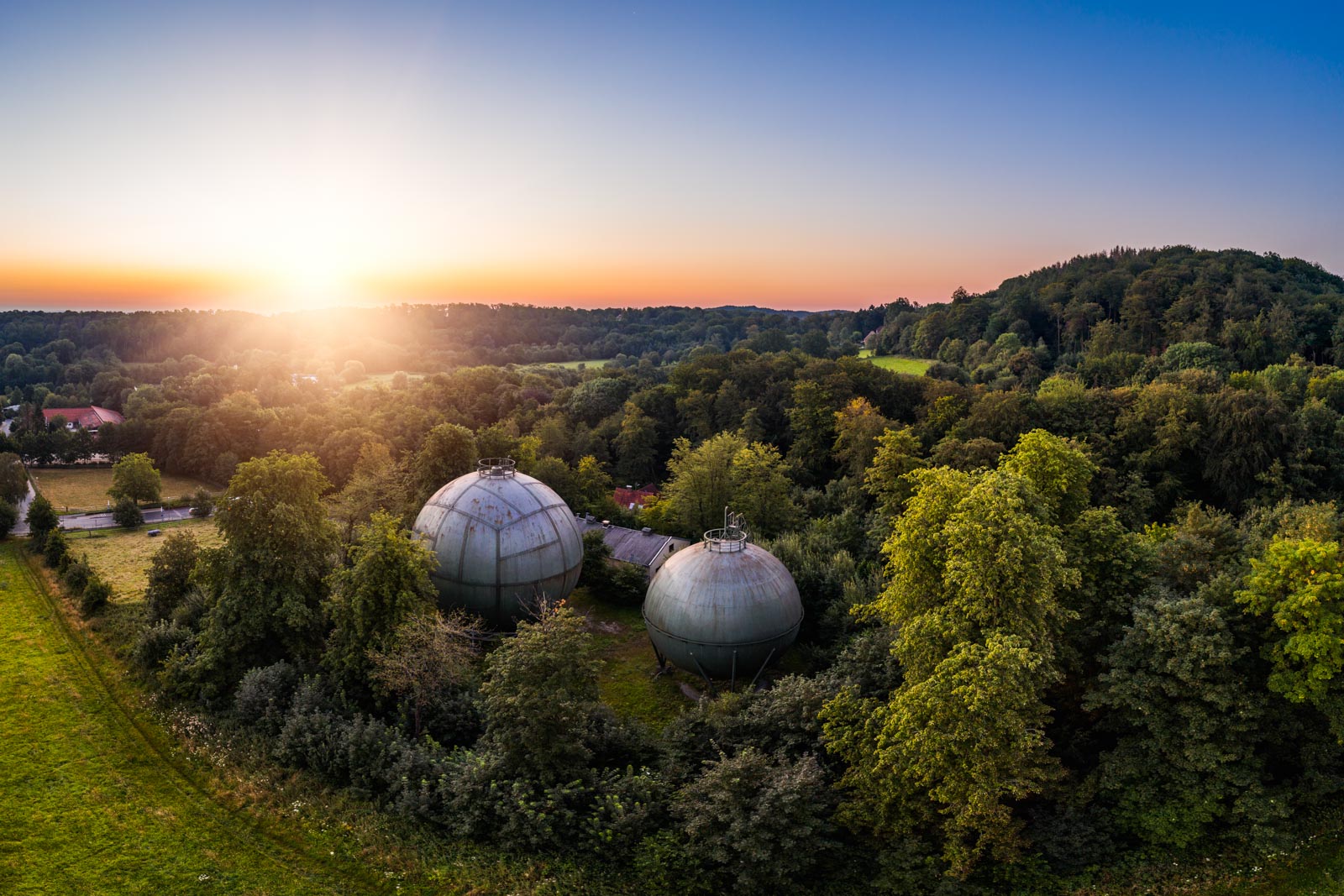
Sunrise above two old gasometers #2
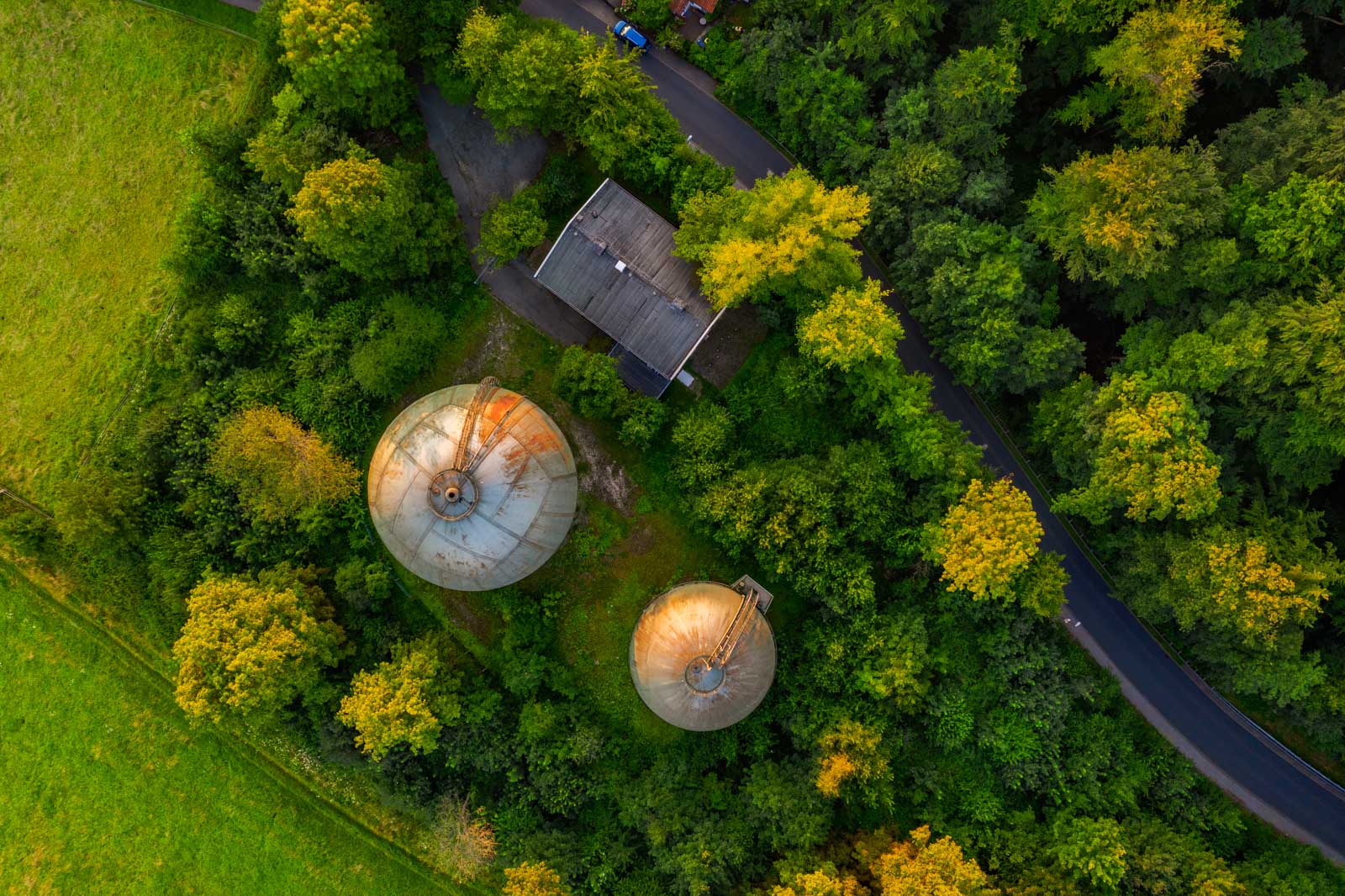
Sunrise above two old gasometers #3
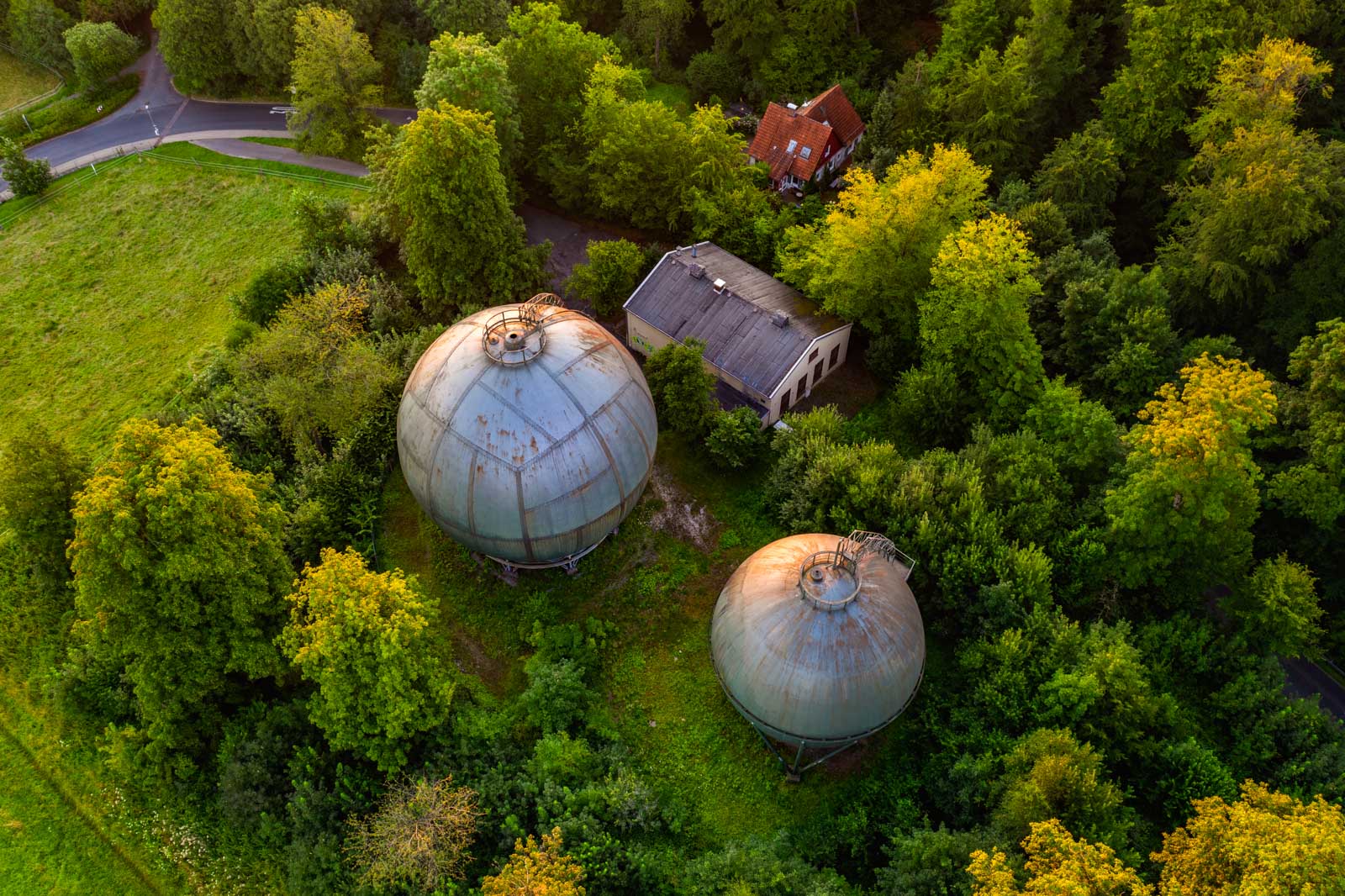
> Nature

